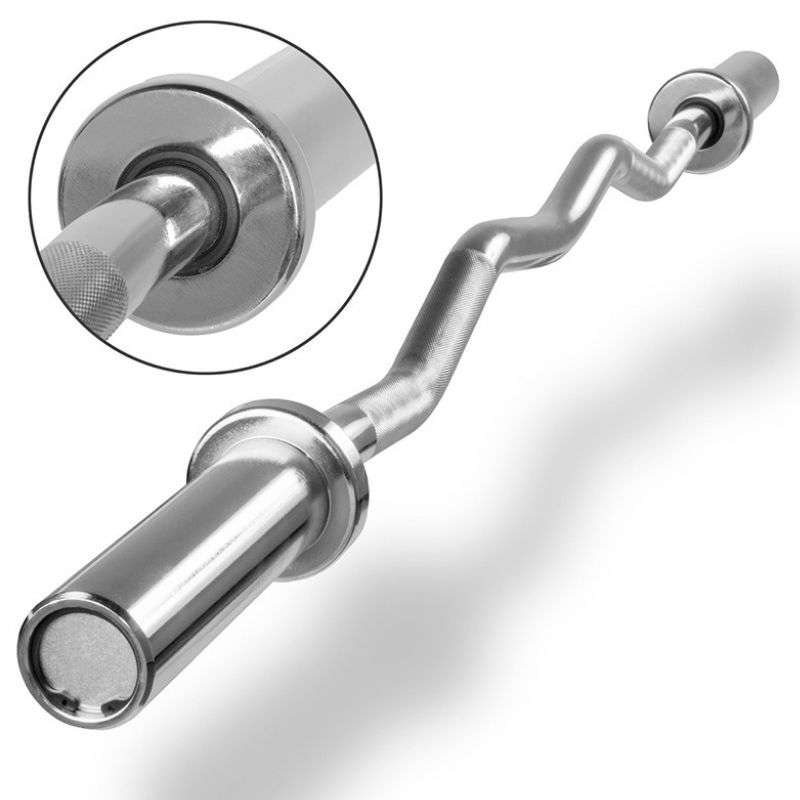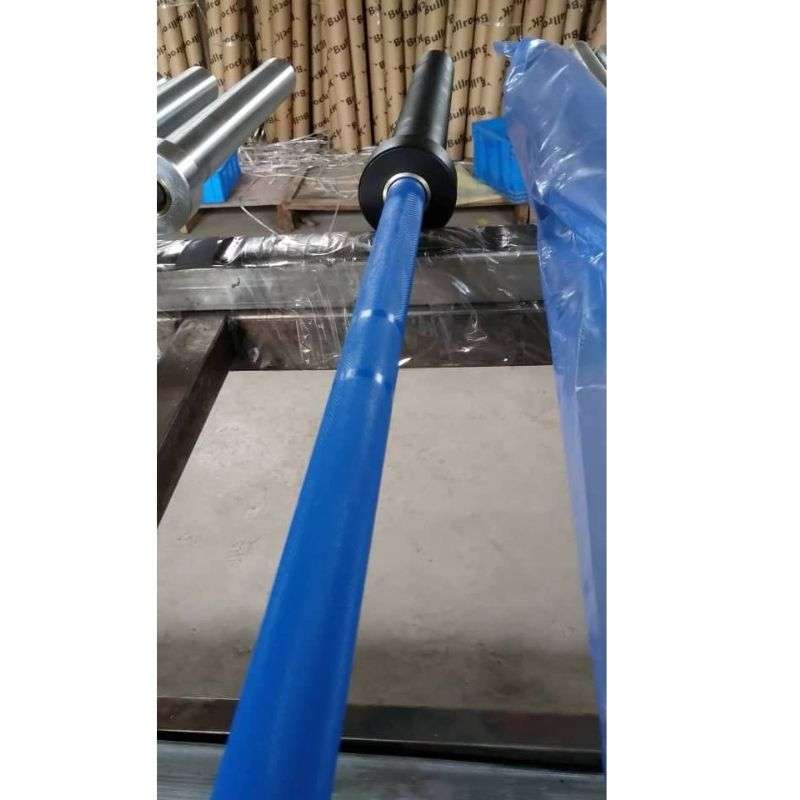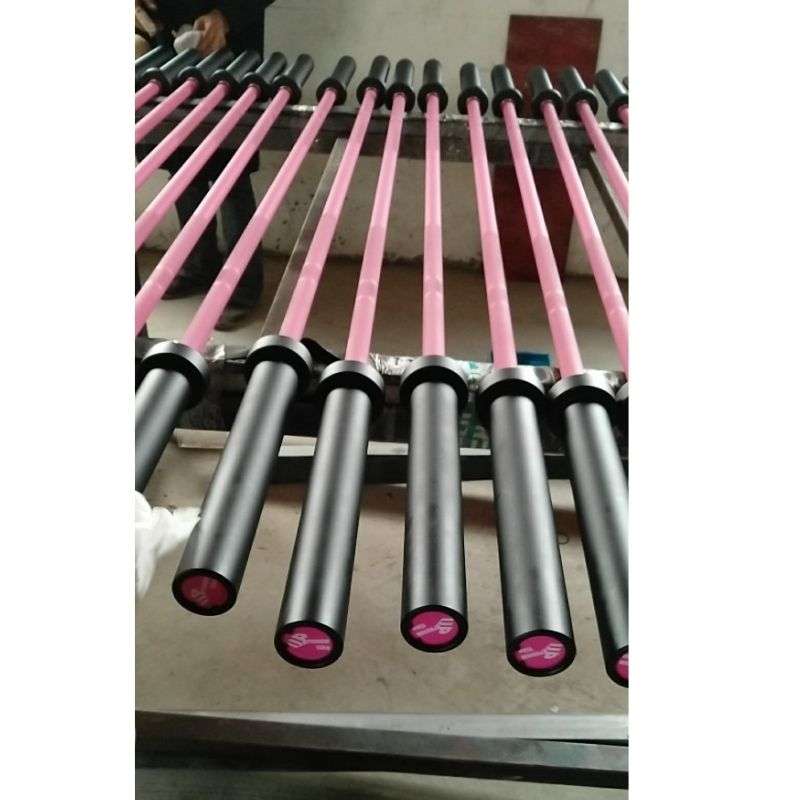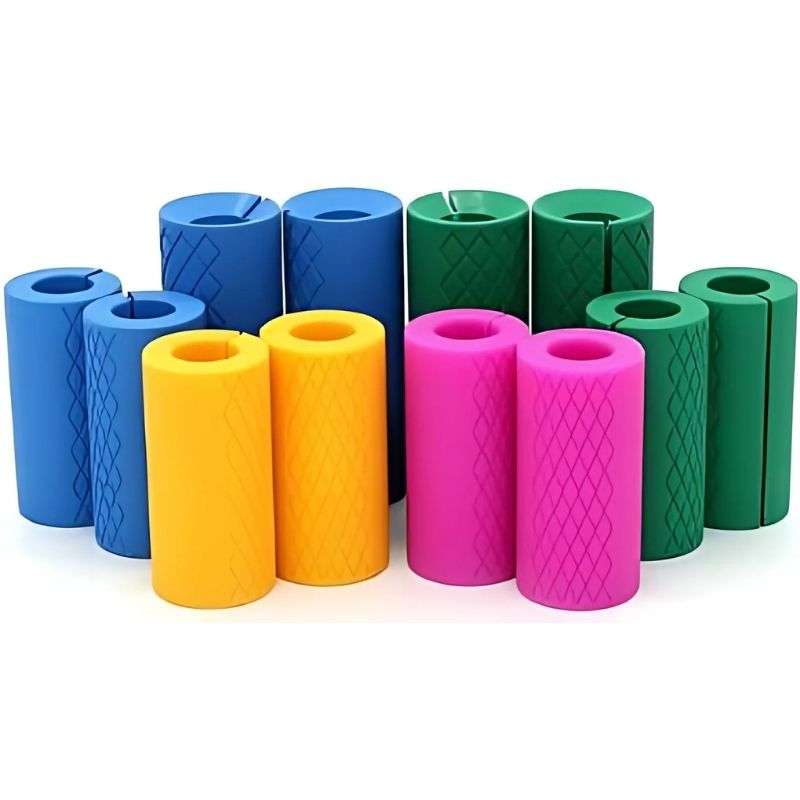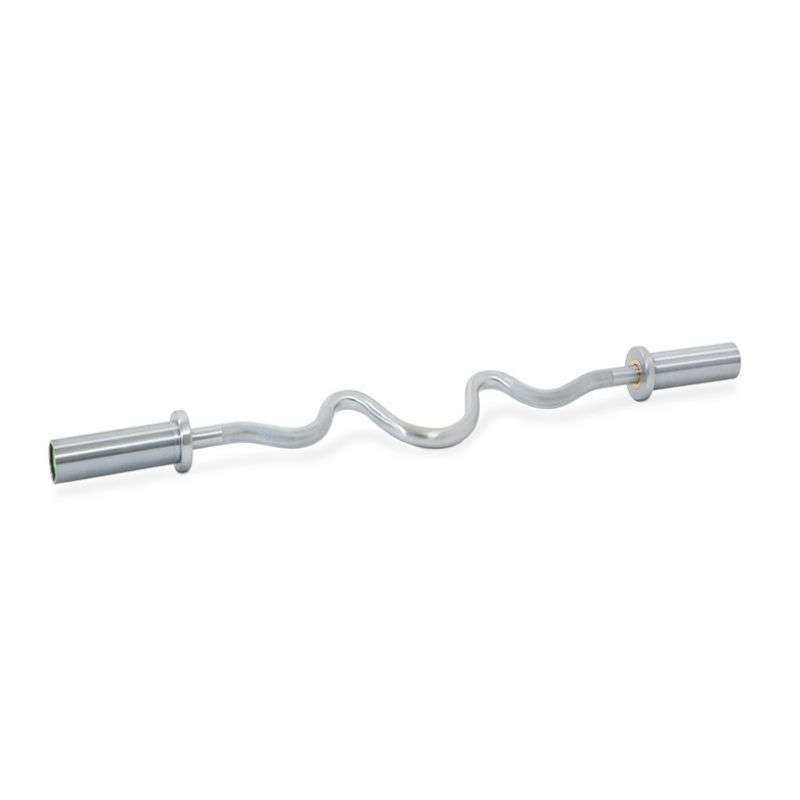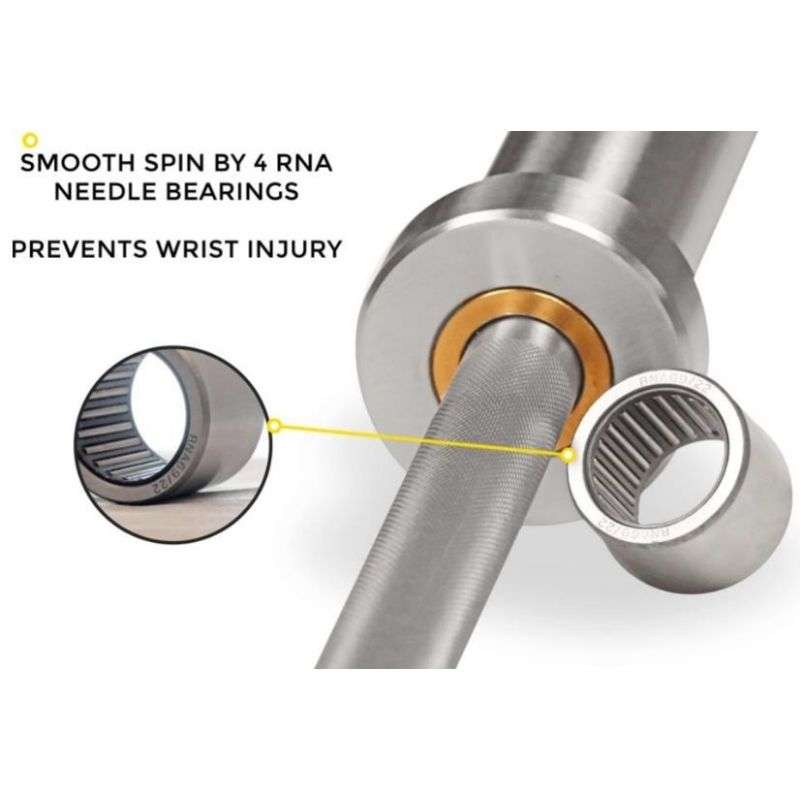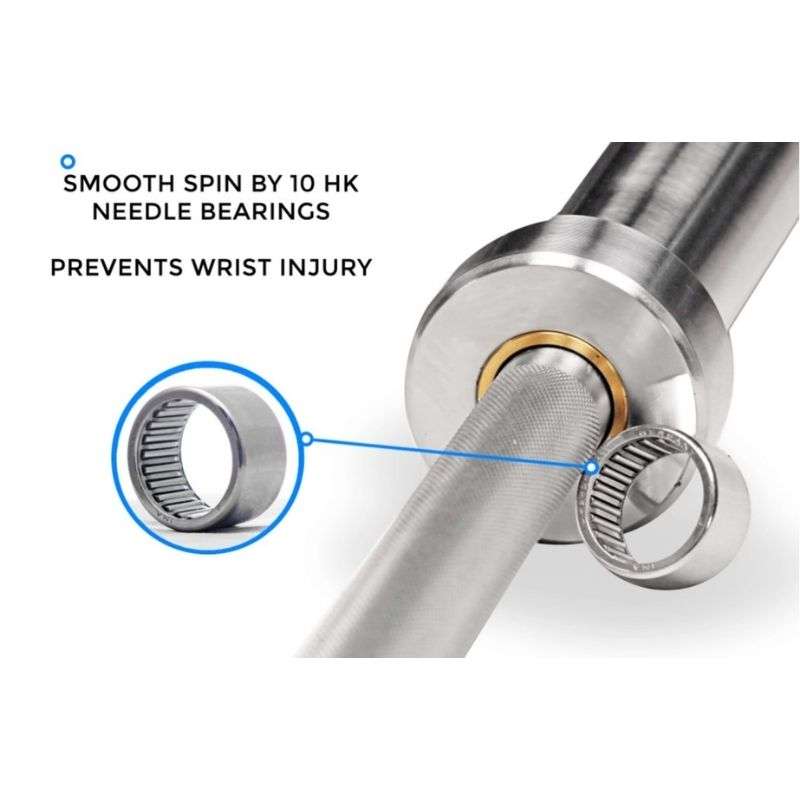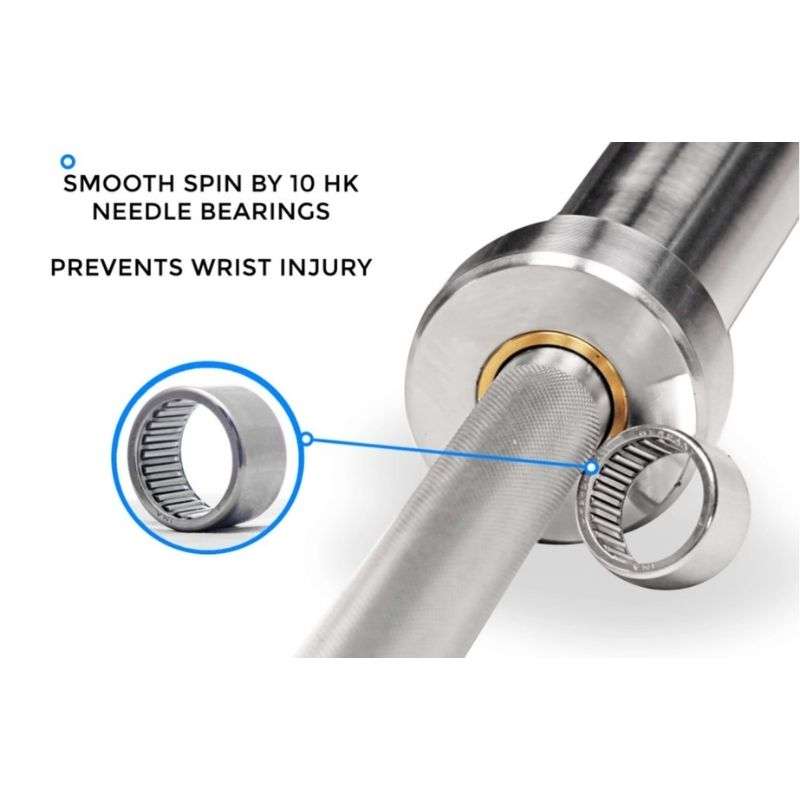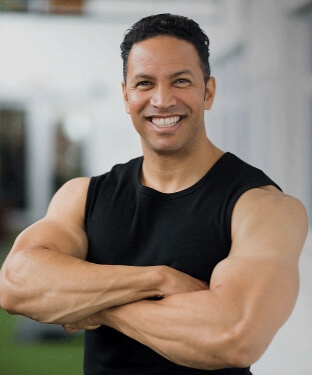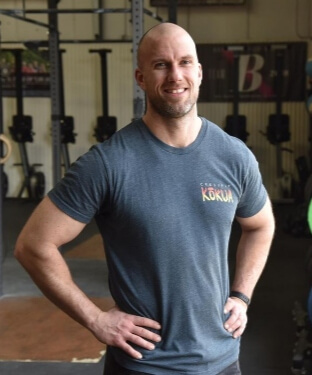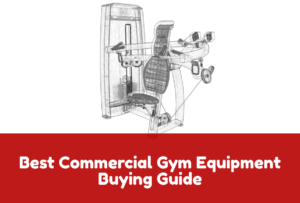Barbell Manufacturer in China
Built by athletes, for athletes.
Built tough to handle every strength training.
Built with precise movement angles since 1997.
Products We Have for You
Showing 1–9 of 25 results
Certified by Global Standards
Backed by CE, TÜV, and ISO certifications so you can buy with full confidence in safety and performance.

DESIGNED By ATHLETES,
FOR ATHLETES
At YR Fitness, Design Transcends Aesthetics.
It’s About Functionality.
Simple, But Significant.
Only True Feedback Counts
Quality Standard of YR Fitness
That’s why we are confident to compete with big brand quality, but at 1/5 price.
Built with Strength: 3.0mm Solid Steel Pipes
We use thick 3.0mm+ Q235 steel pipes for every part of the machine — whether it’s the frame or the training area, no matter the size. With added reinforcement bends, our machines stay strong and steady. No shaking, just solid power.

This is How We Make Your Gym Equipment
Over 20 years, YR Fitness has put $8M into tech—just to bring you better machines.
100% Original Design Since 1997
Because Great Design Makes Great Machines.
Pulley Output Ratio
Leveraging the power of physics, we’ve tailored our pulley output ratio for optimal training. Take our butterfly machines: a 2:1 ratio means a 70kg weight selection delivers a 35kg training load. This higher ratio enhances your workout and saves on weight plate costs.

Compare Our Key Series
73 Series
Heavy-Duty Frame
Pro-Level Movement
High-End Line
61A Series
Durable
Affordable
Best-Selling
C4 Series
Modern Look
Upgraded Fusion
More Features
Quick Comparison At A Glance
Feature | 73 Tough Series | 61A Racing Series | C4 Revival Series |
|---|---|---|---|
Launch Year | 2008 | 2016 | 2025 |
Design Focus | High-end performance and biomechanics | Space-saving, budget-friendly, market-driven | Combines 61A’s simplicity with 73’s advanced features |
Frame Tubing | 75×130×3.0 mm (main) + 58×101×3.0 mm (functional) | 75×118×3.0 mm (main) + 50×120 / 40×80 / 50×100 mm | 150×50×3.0 mm (main) + 50×120 / 40×80 / 50×100 mm |
Aesthetic Design | Parabolic, bold, aluminum accents | Compact and practical | Stylish, modern, fits younger gym aesthetics |
Durability Level | Heavy-duty, custom-engineered components | Very durable, many still running after 20+ years | Same durability level with upgraded styling and adjustability |
Movement Types | Independent converging/diverging paths | Standard movement paths | Includes both standard and independent paths (split models) |
Adjustability | Basic adjustability | Standard user adjustability | Advanced: rotating handles, adjustable pads, backrests, etc. |
Innovation Level | First of its kind globally in 2008 | Refined through years of customer feedback | Integrated innovation from both series + unique new machines |
Series Size | 62 models | 62 models | 74 models (still expanding) |
Target Buyer | High-end gyms, serious training centers | Budget-conscious gyms, franchise chains | Gyms that want both performance and style |
Pricing | Premium | Most affordable | Mid-range, with excellent feature-to-price ratio |
Production Method | Partially handmade due to complex design | Fully industrialized | Industrial production with some specialty detailing |
After-Sales Service | Lifetime support | Lifetime support | Lifetime support |
Let’s Talk
Commercial Barbell – Definitive FAQ Guide
Gym owners know that barbells are a must for their weight training area. With weight plates attached to each end, barbells are the core of strength training and bodybuilding.
Manufacturers produce different types of commercial barbells, from size and shape to function and general use. Since you may have questions about barbells, we have prepared the following FAQ guide.
If you want to choose the right barbells for your gym, be sure to consult our guide.
Let’s start.
Table of Contents
- Commercial Barbell – Definitive FAQ Guide
- 1. What is the structure of commercial barbells?
- 2. How many types of commercial barbells are there?
- 3. What is the difference between a deadlift bar and a standard bar?
- 4. What is the difference between a curl and a straight barbell?
- 5. What is the size of commercial barbells?
- 6. How much does an empty barbell weigh?
- 7. What is the diameter of commercial barbells?
- 8. What is the maximum load of barbells?
- 9. What are the features of barbell sleeves?
- 10. Is the collar of the commercial barbell spinning?
- 11. What is the difference between bushing and bearings to a commercial barbell?
- 12. How does knurling indicate the types of barbells?
- 13. Is the depth of the barbell knurling important?
- 14. Is whip important to a barbell?
- 15. What is the material of commercial barbells?
- 16. What is the finish of commercial barbells?
- 17. What is the tensile strength for high-end barbells?
- 18. Is commercial grade barbell rust resistant?
- 19. Is a commercial barbell easy to break?
- 20. Is the barbell’s diameter suitable for all weight plates?
- 21. Is it safe to leave weights on the barbell?
- 22. What to consider when buying commercial barbells from manufacturers?
- 23. Is it possible to customize my barbells?
- 24. Final Words
1. What is the structure of commercial barbells?
The structure of commercial grade barbells consists of four main parts. These may have different dimensions and characteristics, but they will be the same, regardless of the barbell type:
- Shaft
This part is the middle part of the piece and represents most of the length of the barbell.
- Sleeves
Sleeves are located at the two ends of the shaft, where the weight plates are loaded.
- Collar
This is actually integrated in the two sleeves. This part is thick and is used to prevent plates from sliding onto the shaft.
- Knurling
This cross hatch pattern is located on the shaft, so it is not separated. It is important because it helps take a good hold of the bar under any circumstances.
However, some premium or specialty barbells provide additional parts. Some of them are extremely useful in competitions, such as:
- Spinning sleeves
This allows the athlete to go under the axis quickly, without loosening the grip.
- Bearings
The bearings are located between the shaft and the sleeve, so it may not be visible. This supplement is important because it allows the sleeve to rotate independently of the shaft. The bearings help maintain the functionality of barbells, mainly because they fall repeatedly on the floor during training.
- Fastener
The fastener keeps the sleeve tightly attached to the bar.
- End caps
End caps are used to close the sleeves. Usually, it is a plastic cover or metal circle cap at the end of the sleeve to attach it to the bar.
The main structure and extras guarantee a safe and convenient way to use barbells, reflecting the attention to detail and durability standards upheld by commercial gym equipment manufacturers in professional-grade strength training tools.

Figure 1 The structure of commercial barbell
Considering barbell quality and structure for your gym? YR Fitness offers commercial-grade barbells built for performance. Talk to us about your equipment needs.
2. How many types of commercial barbells are there?
There are many types of barbells depending on size, function, weight, shape and so on. To make it easier to understand, we break it down into three main categories: form, user and function.
Barbells by form:
- Straight bars
- Curl bars
- Trap bars
- Swiss bars
Barbells by user:
- Men
- Women
- Juniors
Barbells by function:
- Powerlifting bars
- Olympic bars
- Deadlifting bar
- Squat bar
- Multi-purpose bar
Various types of bars provide complex force routines. For gym owners, having more than one type of commercial barbells in their gym is crucial for a full coverage of bodybuilding.
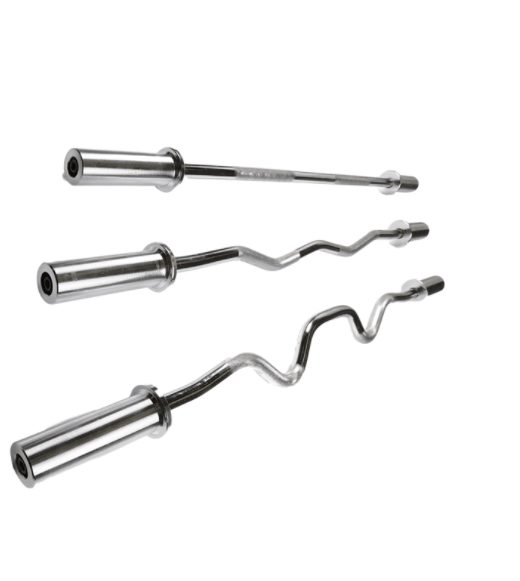
Figure 2 Straight and curl barbell
Planning to equip your gym with versatile barbells for every lifting style? Reach us to find the best range of commercial barbell options at YR Fitness.
3. What is the difference between a deadlift bar and a standard bar?
The main differences between the two bars are whip, diameter and knurling. While a deadlift bar bends more easily and has outer knurling, a standard bar has less whip and center knurling.
Deadlift bars are slightly longer and thinner than the power bars, with a diameter of 27 mm, which helps with the whippy effect. To increase the whip, the deadlift bar moves the weight further away from the center of the bar. In addition, deadlifts have no center knurling, but aggressive outer knurling for better grip.
Standard bars are more stable and slightly shorter, with a diameter of 29 mm. Certainly, standard bars have less whipping and provide a strong center knurl for good grip.
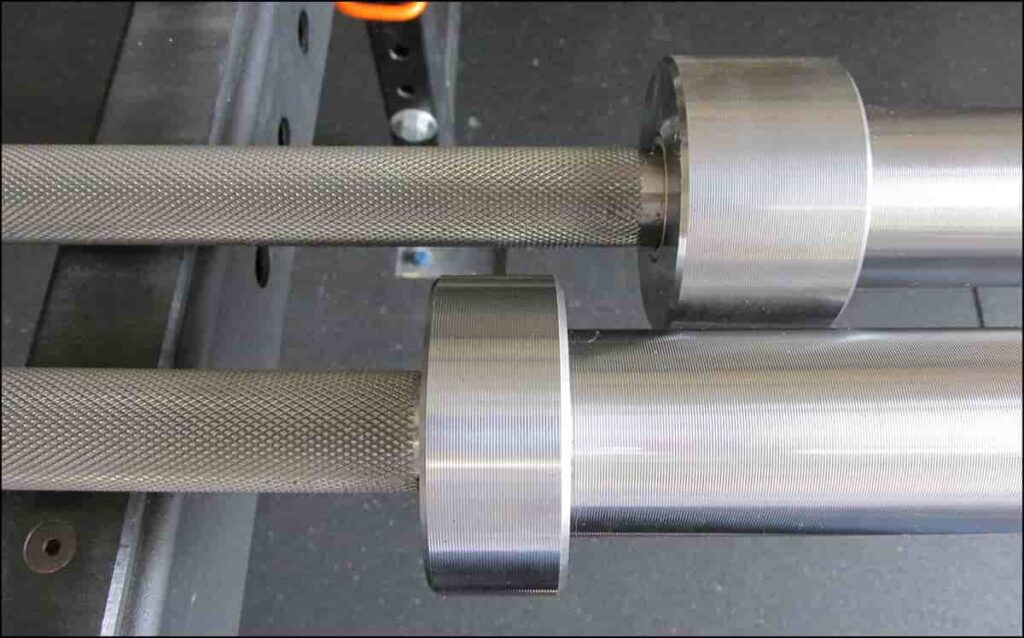
Figure 3 Deadlift bar vs standard bar
Not sure which bar type suits your gym’s setup best? YR Fitness can help you choose the right barbell for strength-focused training. Contact us for expert advice.
4. What is the difference between a curl and a straight barbell?
Ergonomics and comfort make the difference. While a straight bar puts more stress on wrists during lifts, the curl bar is easier and allows heavier lifting without causing pain.
A straight bar is heavier and has the positioning of the weights further to the end. This causes a torque to the wrists when making a complete lift. Over time, it can cause larger wrist supination and pain during training.
Straight bars are preferred by most athletes when building the biceps. As a precautionary measure, during lifts, many athletes wear wristbands for protection.
The curl bar is shorter, lighter and allows more weight loading than a straight bar. During the training, a curl bar feels better to grip. This tight grip is less likely to hurt your wrists.
However, both bars are effective and offer good muscle training. It is a matter of personal comfort which bar to use at the gym.
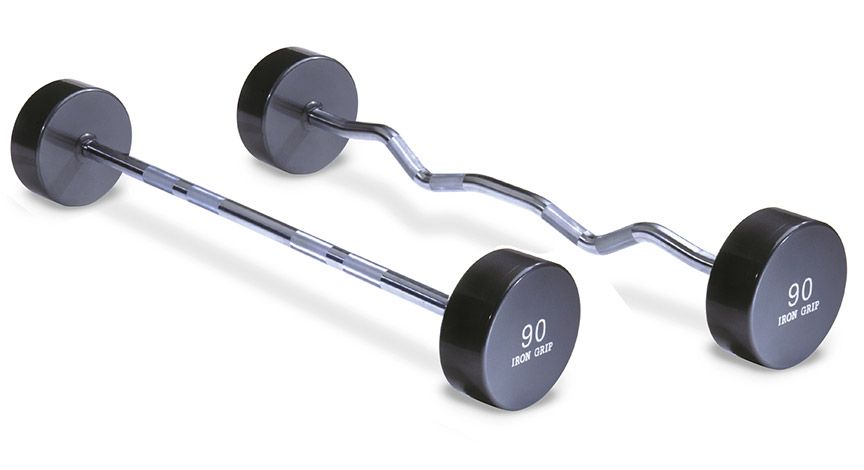
Figure 4 Straight vs curl bar
Not sure which bar type suits your gym’s setup best? YR Fitness can help you choose the right barbell for strength-focused training. Contact us for expert advice.
5. What is the size of commercial barbells?
Depending on its purpose, the size of the bars varies from 1200 mm to 2400 mm of straight bars.
The standard commercial barbell size worldwide is 2200 mm and is used for general training purposes. But EZ curl bars or specialty barbells may have different lengths.
The most important thing about the size of the bar is the proportion. A well-sized barbell shall ensure sufficient length to take all hand positions while loading the plates.
Size consistency and versatility are key in a gym’s barbell selection. Reach out to YR Fitness for durable bars sized to meet your training demands.
6. How much does an empty barbell weigh?
Empty commercial barbells weight is determined by its purpose:
- barbells for men weight 20 kg
- barbells for women weight 15 kg
- barbells for children/youth weigh from 2,5 kg to maximum 10 kg
Need commercial barbells with precise weight specs for your members? YR Fitness delivers exactly that. Contact us to get started.
7. What is the diameter of commercial barbells?
Generally, the diameter of the bars ranges from 22 to 29 mm.

Figure 5 Diameter of barbells
Looking for standard-diameter barbells compatible with your plates? Message us and let YR Fitness help match your needs.
8. What is the maximum load of barbells?
The standard commercial bar can withstand a load of up to 100 kg (about 200 lbs). By going over this weight, it may damage your barbell.
Olympic barbells, however, can take up to 500 kg (1200 lb) without suffering permanent damages.
For gyms that cater to serious lifters, maximum load capacity matters. Talk to us about high-performance barbells from YR Fitness.
9. What are the features of barbell sleeves?
The most important features of the barbell sleeve are length, diameter and finish.
Diameter. The diameter of the sleeves is usually 50 mm. This is because most of the weight plates on the sleeves also have a central hole of 50 mm too.
Length. The length of the sleeve determines how many plates to load, and thus how much weight to lift. In general, the length of the sleeves varies from 100 mm to 445 mm.
A shorter sleeve can be good for beginner athletes, but will not meet the requirements of an athlete ready to make full lifts.
Finish. The sleeves are delivered in different finishes like white zinc, black zinc, chrome or cerakote, with decorative motifs or not. This has aesthetic and protective purposes, against oxidation.
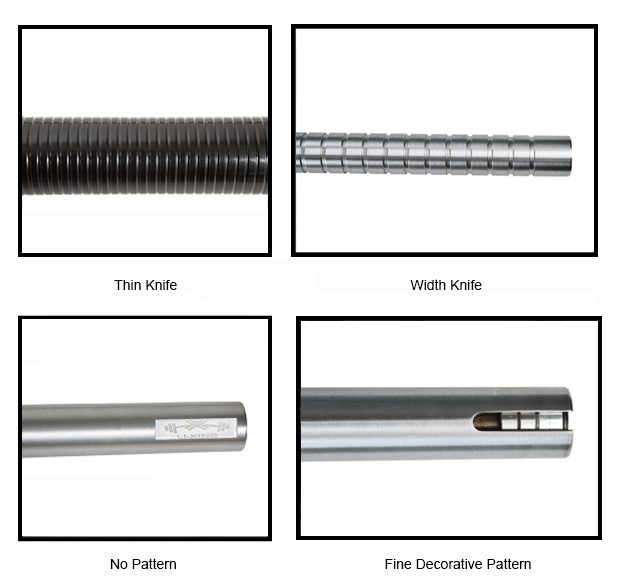
Figure 6 Finish types with decorative motifs for barbell sleeves
Sleeve design influences both safety and performance. Contact us to learn more about YR Fitness’s commercial barbell finishes and specs.
10. Is the collar of the commercial barbell spinning?
Yes. For the Olympic barbells, the collar rotates as the bar is moving up through the lift. This spin is designed to help the lifter in his lifting exercise.
The design and quality of the collars can influence the overall lifting experience. In some setups, custom barbell collars are used to ensure a more secure fit and consistent rotation, tailored to specific training environments or branding needs.
Need rotating collars that offer smoother lifts for your gym clients? Reach us and explore options from YR Fitness.
11. What is the difference between bushing and bearings to a commercial barbell?
The main difference between the two is the method of construction. While bushing is simpler, the bearings come in different forms.
Both bushing and bearing are indispensable for the bar. It assists in the lifting process and prevents damage to the bar through friction.
Bushing is simply full of brass or bronze rings. This element lies between the inner and outer sleeves, helping to smooth the rotation.
The bearings allow a smooth and silent rotation and are also mounted between the bar and the sleeve. Bearings are available in three types:
- needle bearings
- ball bearings
- thrust bearings
The amount of bearings often reflects the quality of commercial barbells. The optimal lifting experience is provided by barbells with needle bearings combined with bushing.

Figure 7 The differences between bushing and bearings
Choosing between bushing and bearing? YR Fitness supplies both with premium build quality. Talk to us to find your fit.
12. How does knurling indicate the types of barbells?
The location and markings of the knurling can indicate the different types of barbells.
Knurling is a cross pattern made on the shaft to provide good grip. The pattern is delivered in different types to ensure different grip levels:
- straight design
- angular design
- diamond design
Olympic bars have centered knurling and have small rings where hands usually grip. The ring knurls are 36 inches apart and indicate the position of the same grip each time.
Powerlifting bars have center knurling which grip on the back during squat. The rings here are 32 inches away.
For fitness centers and commercial gyms, the markings are useful to indicate where to take the same grip each time. This tool will help the athlete to be consistent in his lifts and workouts.
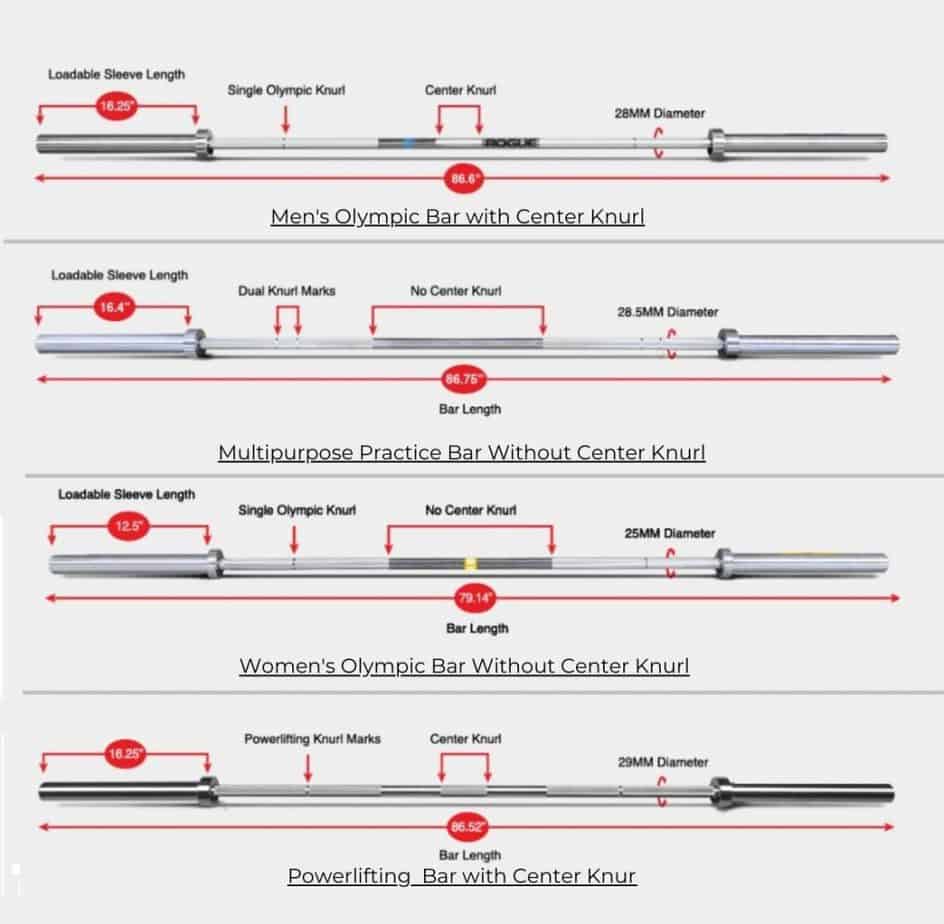
Figure 8 Knurling on barbell
Clear knurl markings improve lifter confidence and grip. Contact us to explore our barbells tailored for commercial gyms.
13. Is the depth of the barbell knurling important?
Yes. The depth of the knurling guarantees a firm hold of the shaft. Having more positive knurling than necessary can cause cuts on the skin, not having enough knurling can cause early cessation of the grip.
For optimal performance, commercial quality bars achieve a balance between positive and negative knurling. Commercial gym owners normally opt for neutral knurling, rather than special use knurls. The aim is to provide a broad range of weight exercises without causing any inconvenience.
Nevertheless, a complete gym center will provide at least one or two aggressive knurl barbells for their hardcore powerlifters as well.
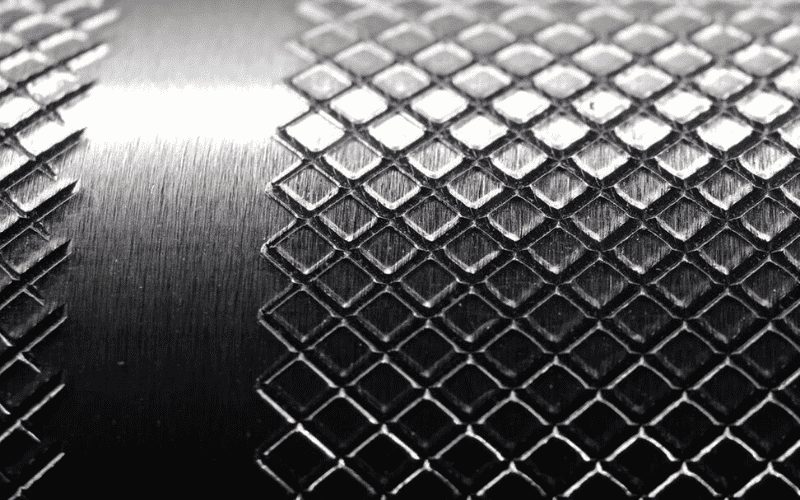
Figure 9 Depth of barbell knurling
Proper knurling depth can prevent injuries and enhance grip. Reach out to YR Fitness for barbells that balance grip and comfort.
14. Is whip important to a barbell?
Yes. Whip, or the ability to bend under tension, is an important feature of barbells. Whip is particularly relevant for athletes and lifters who have specific force approaches.
The material of the bar is an essential factor in determining the amount of whip will have.
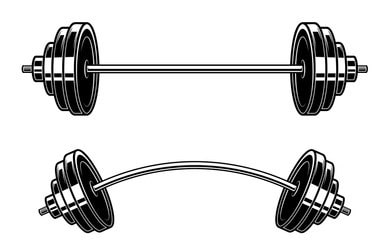
Figure 10 Barbell whip
Looking for bars with optimal whip for different training styles? Talk to us at YR Fitness, we’ll help you make the right call.
15. What is the material of commercial barbells?
A commercial barbell is normally made of steel. The specific type of steel determines the durability and strength of the bar. The best barbells are made from stainless steel.
YR Fitness is a top commercial quality barbell supplier that provides high-end bars, suitable to the vast majority of gyms and fitness centers.
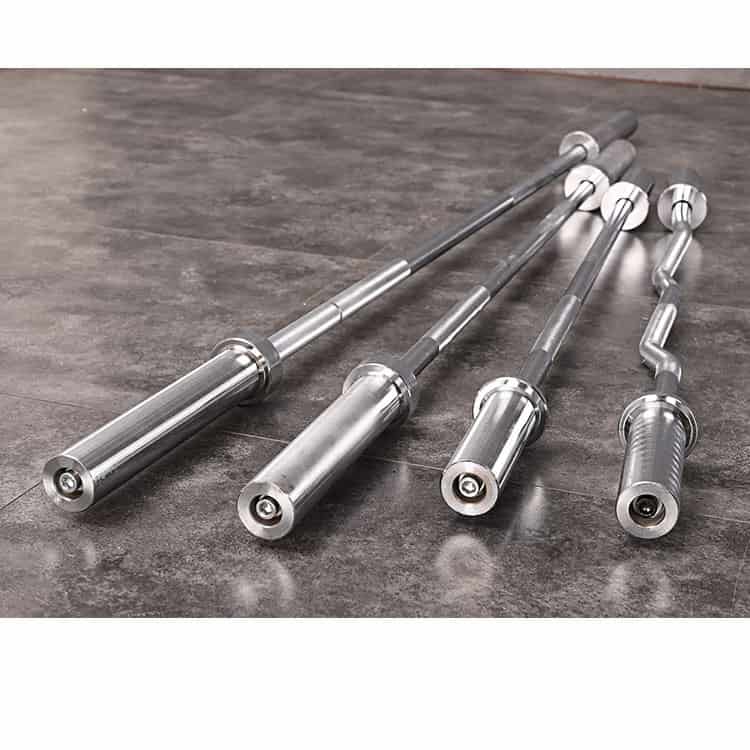
Figure 11 Stainless steel commercial barbell
Barbell material directly affects durability and performance. Contact us to choose long-lasting steel bars from YR Fitness.
16. What is the finish of commercial barbells?
The finish of the barbell means the treatment of the shaft and the sleeves, which will give rise to different looks. The most common finish of the barbells are:
- bare steel
- black oxidation
- black zinc
- hard chrome
- decorative chrome
- bright zinc
- cerakote
YR Fitness provides superior finish treatment to its barbells, so that all the bars meet the competition standards. With YR, you make sure of the best barbells for your commercial gyms.
Finish treatments protect your investment and improve aesthetics. YR Fitness offers custom coatings. Reach us to discuss your finish preferences.
17. What is the tensile strength for high-end barbells?
Tensile strength, or the breaking point of the barbell, is rated in pounds per square inch (PSI). High-end barbell manufacturers produce the bar with at least 180.000 PSI rating.
Tensile strength defines safety at heavy loads. Message us for barbell specs that meet international standards.
18. Is commercial grade barbell rust resistant?
Yes. In order to prevent oxidation and rust of the bars, commercial grade barbell manufacturers treat the surface with coating substances or sprays.
While bare steel is less resistant to oxidation, other paints such as chrome or cerakote have more resistance.
When buying your commercial barbell, be sure to ask the supplier about surface coating and rust resistance.
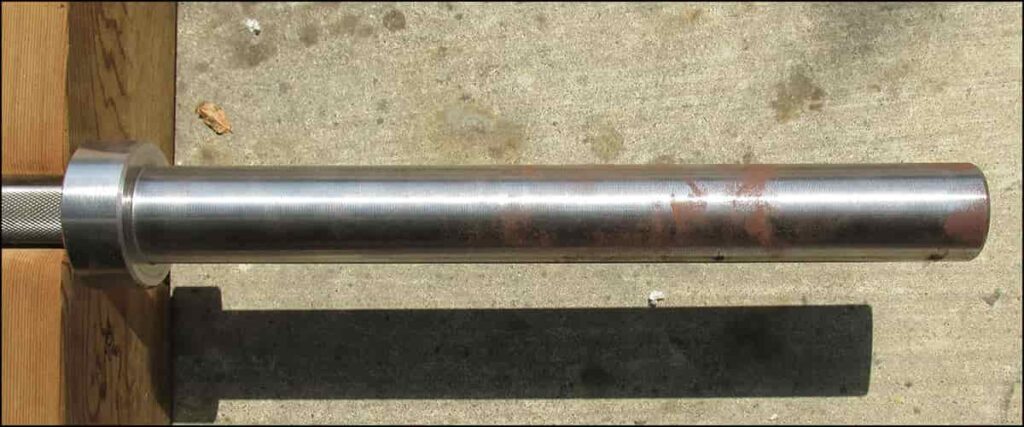
Figure 12 Rusted barbell
Rust resistance matters for long-term use. YR Fitness provides rust-resistant finishes to help your gym stay sharp. Talk to us to learn more.
19. Is a commercial barbell easy to break?
No. In practice, all barbells can warp, bend and break. It is more common that commercial barbells bend under tension or snap to one of the ends rather than break.
At about 120 kg (250 lbs) there will be a hint of a bend on your barbell. Once the weights reach 300kg (700lbs) or higher, those bars will bend considerably and can be broken.
To avoid damage, choose the bars with a little whip. To increase security and avoid the risks of snapping, you can choose to add snap collars to the bar.
However, low-quality barbells can cause a lot of damage. Be sure to buy high end commercial barbells to avoid damages of your gym equipment.
Avoid damage with smart barbell selection. Contact us for durable options trusted by professional gyms worldwide.
20. Is the barbell’s diameter suitable for all weight plates?
No. The diameter of the barbell sleeve shall correspond to the diameter of the central hole of the weight plates. The most common sleeves and plates have diameters of 25 mm (1”) and 50 mm (2”).
High quality bars and plates have lower tolerances than the cheaper versions. For example, superior bars have a sleeve diameter of 49.5 to 50 mm, which corresponds perfectly to the plates between 50.2 and 50.8 mm in diameter.
Quality bars and plates are made to go together. But if the high mix with low quality bars and weight plates, you should consider problems and possible damage to the bar.
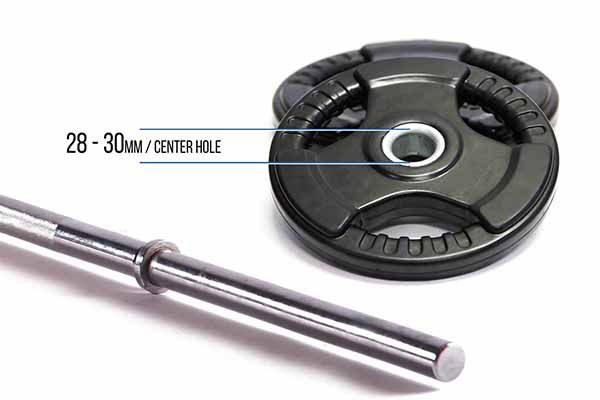
Figure 13 Standard barbell and weights
To avoid mismatch between bars and plates, choose precisely machined barbells. Reach out and we’ll help you make the right match.
21. Is it safe to leave weights on the barbell?
Yes. Barbell manufacturers mention that it’s safe to leave a barbell loaded in a rack.
However, keep in mind that leaving heavy weights on the bar, over time, it can cause the bar to bend.
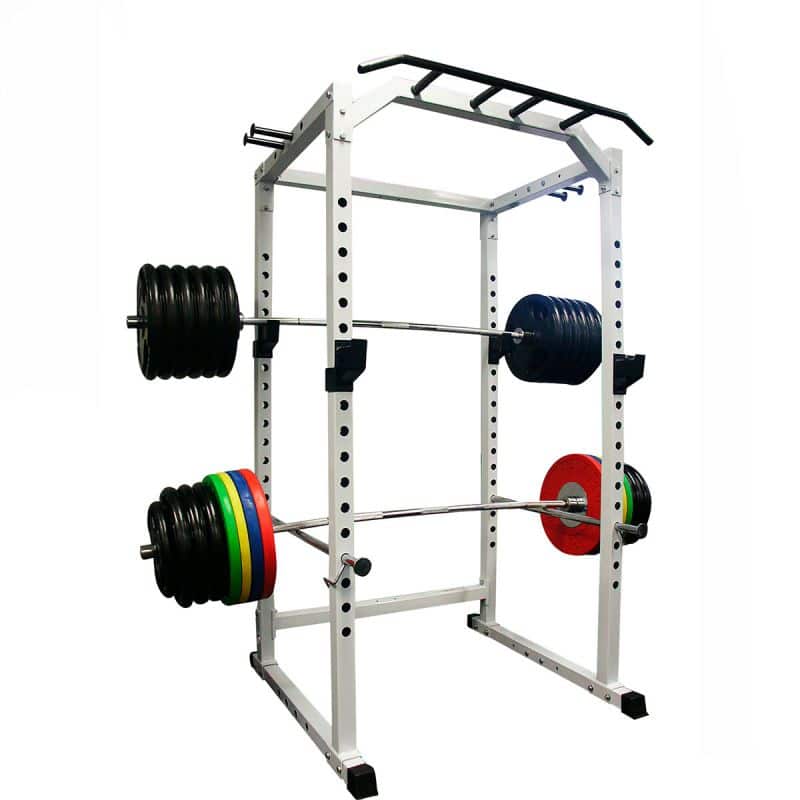
Figure 14 Loaded barbells on a rack
Barbell durability matters, even between sets. Message us if you’re looking for resilient barbells built for everyday gym demands.
22. What to consider when buying commercial barbells from manufacturers?
For gym owners, dealers and distributors of gym equipment, buying from manufacturers is the best option. But when you select the equipment, you have to consider some important features for barbells: diameter, knurling, whip and tensile strength.
- Diameter: determines the types of exercise of the bar
- Knurling: indicates differences in the approach of lifts
- Whip: indicates the level of flexibility
- Tensile strength: breaking point rated at 190.000 PSI or above
Need help evaluating barbells based on tensile strength, whip, knurling and specs? YR Fitness can guide your purchasing decision. Talk to us today.
23. Is it possible to customize my barbells?
Yes. Custom barbells make a good impression on clients. YR Fitness is your expert in custom made barbells or any other gym equipment.
Your logo can be placed in different locations on the sleeve and on the shaft, such as the tail or the collar. It can be done with a laser, easy, non-damaging and attractive.
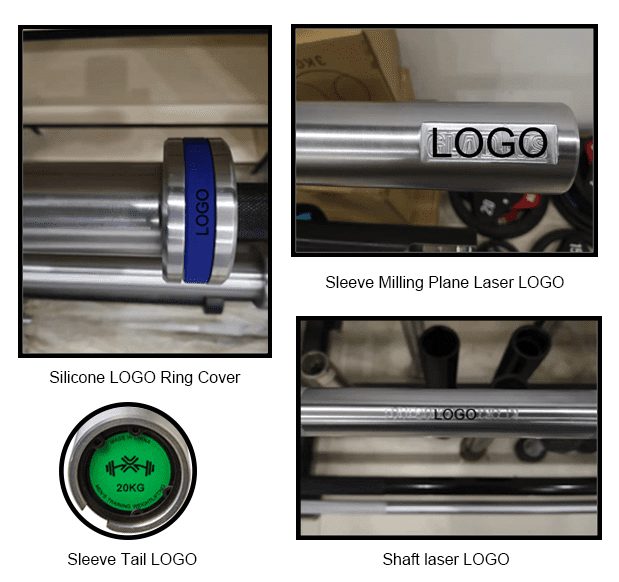
Figure 15 Logo placement
YR Fitness can personalize your barbells with laser logo engraving and custom features. Want your branding on your equipment? Contact us and let’s make it happen.
24. Final Words
I hope that the previous guide has answered all the important questions about commercial barbells.
If anything remains questionable about barbells or manufacturers, please contact our sales team now.
Need to import high-end bars? YR Fitness will prepare your order now!
